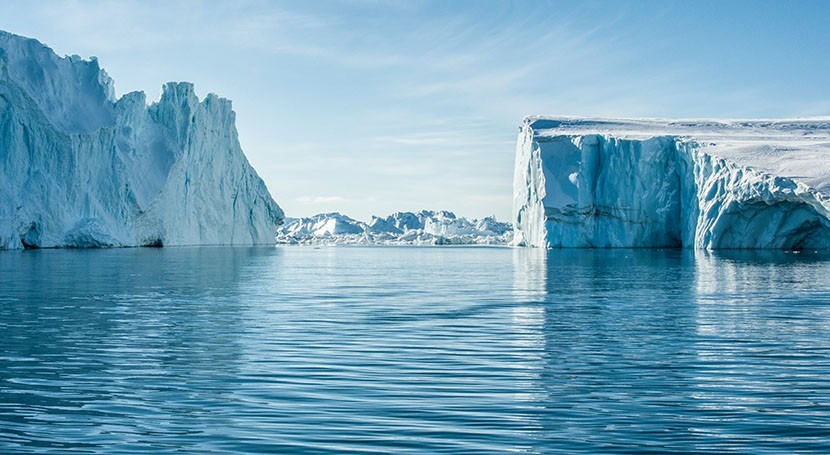Losses will lead to a minimum rise of 27cm regardless of climate change, according to scientists.
Even if the burning of fossil fuels that is causing the climate crisis were to come to a halt overnight, significant sea-level rise due to the melting of the Greenland ice cap is now unavoidable, scientists warn.
The melting of 110 trillion tonnes of ice from Greenland alone will result in a minimum sea level increase of 27 cm (10.6 in) due to current global warming. A sea level increase of several meters seems likely due to ongoing carbon emissions, other ice caps melting, and ocean thermal expansion.
Flooding caused by increasing sea levels is one of the most serious long-term consequences of the climate problem, affecting billions of people. If Greenland’s record melt year of 2012 becomes a regular occurrence later this century, as is possible, the ice cap will cause a “staggering” 78cm rise in sea level, according to experts.
Previous research has employed computer models of ice cap behaviour to forecast future losses, but the physical processes are complex, resulting in high uncertainty in the results.
In contrast, the study published in the journal Nature Climate Change used satellite observations of Greenland ice loss and ice cap form from 2000 to 2009. This information allowed scientists to assess how far global warming has pushed the ice sheet away from an equilibrium where precipitation equals ice loss.
This enabled the estimate of how much more ice will be shed.
The 27cm projection is a minimum because it only accounts a portion of global warming and excludes other ways glacier ice is lost near the ice sheet’s margins.
The study’s advantage is that it provides a reliable estimate of inevitable sea-level rise, but the approach utilised does not provide a timeline for when the ice will be gone.
Nonetheless, based on scientists’ broad understanding of how ice sheets like Greenland shed ice into the ocean, the majority of the surge would occur quite soon, according to the experts. Other experts warned in 2021 that a substantial portion of the Greenland ice sheet was approaching a tipping point.
Pakistan’s deadly floods
The warning comes amid increasing concerns of natural disasters around the world.
Most recently, devastating floods have ravished Pakistan, leaving a third of the country underwater.
Rescue efforts are underway across Pakistan, as millions of people remain trapped by the greatest floods in the South Asian country’s history, notably in the country’s southern and northwest areas.
In the aftermath of the monsoon floods, makeshift aid camps have cropped up all throughout Pakistan, in schools, on highways, and on military sites.
Every year, Pakistan suffers during the June-August monsoon season, but 2022 has been exceptionally harsh. Normally, the rainy season begins in July, but this year, it began raining strongly in June, causing sever flooding.
Between late June and mid-July, about 300 people were killed.
According to the Pakistan Meteorological Department (PMD), the average rainfall in Pakistan for the three-month period of July 1 to September 30 is 140.9 mm. Pakistan was 11.3% short of this target in year (2021), with 125 mm of rain.
The country received up to 354.3 mm of rain this year between July 1 and August 26, according to the PMD. This was 211% higher than the average of 113.7 mm during this time period.
The southern region of Sindh has been the worst affected in August, receiving 442.5 mm of rain this month until the 26th, which is 784% higher than the 50 mm typical for the period August 1-26.
Balochistan is the other hard-hit region, with 129.7 mm of rain falling between August 1 and 26, a 522% increase above the region’s typical 20.9 mm for this time period.
Climate change
Extreme weather events have been cited as proof of climate change across the world.
After a summer of record-breaking temperatures and enormous bush fires, Europe is currently experiencing its worst drought in 500 years. China and parts of the United States are also experiencing drought.
According to the Global Climate Risk Index, which analyses the human and economic toll of big extreme weather events, Pakistan has continuously rated among the countries most vulnerable to the effects of climate change.
This is despite it being responsible for less than 1% of global carbon emissions.







